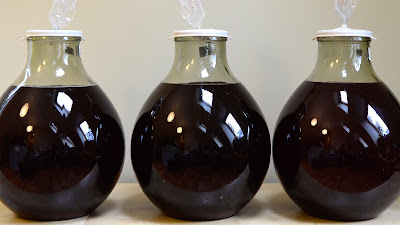History:
The Aronia species are native to eastern North America. They have likely been used for thousands of years by natives for food and medicine. They have been used for some time as ornamentals, but it is only recently that they have become significantly more popular once they gained “health food” status.
Trivia:
- The common name “Chokeberry” was given because, when raw, the fruit is typically too astringent (drying or mouth puckering). Many birds will avoid this berry until all other fruit sources are gone. This will often leave the fruit on the plants through mid-Winter.
- The Aronia (aka ChokeBERRY) should not be confused with Prunus virginiana, the ChokeCHERRY, although fruits from both similar-looking plants are edible.
- The fruit of Aronia is very high in vitamin C and antioxidants (specifically anthocyanins found in the Black Chokeberry (Aronia melanocarpa).
- A mature plant can have up to 40 canes per shrub.
USING THIS PLANT
Primary Uses:
- Edible fruit – usually cooked. Some improved varieties are mild enough to be eaten raw (see Trivia above).
- Preserved Fruit – jams, jellies, preserves, etc. (naturally high in pectin). Can also be dried and used in teas and pemmican.
- Fruit Juice – if mixed in a 1:1 ratio with another juice that is naturally sweet (like apple juice), then no other sweetener is needed
- Juice can be reduced with heat to make syrup.
- Primary or adjunct flavor in wines, but likely could be used in beers and liquors.
- Tea Plant (dried fruits are used)
- Fruit Leather
Secondary Uses:
- General insect (especially bees) nectar plant
- Wildlife food plant, especially birds, in Winter
- Wildlife shelter plant for small mammals and birds
- Groundcover plant – Black Chokeberry (Aronia melanocarpa), plant 3-4 feet (1 meter) apart
- Ornamental Garden Plant
- Drought-Resistant Plant – can withstand low water periods, but not extremely prolonged dry periods.
- Windbreak species
- Living Fence species
Yield: This varies dramatically on age, variety, and growing conditions, but a mature plant can average 22 lbs (10 kg) per year. Reports of almost 40 lbs (17 kg) per bush have been reported.
Harvesting: Autumn. Only harvest when fully ripe. Taste is better after a frost. A berry comb will greatly assist harvesting the small fruits.
Storage: Best when used fresh. Can be stored in a cool place (like a refrigerator) for up to two weeks.












